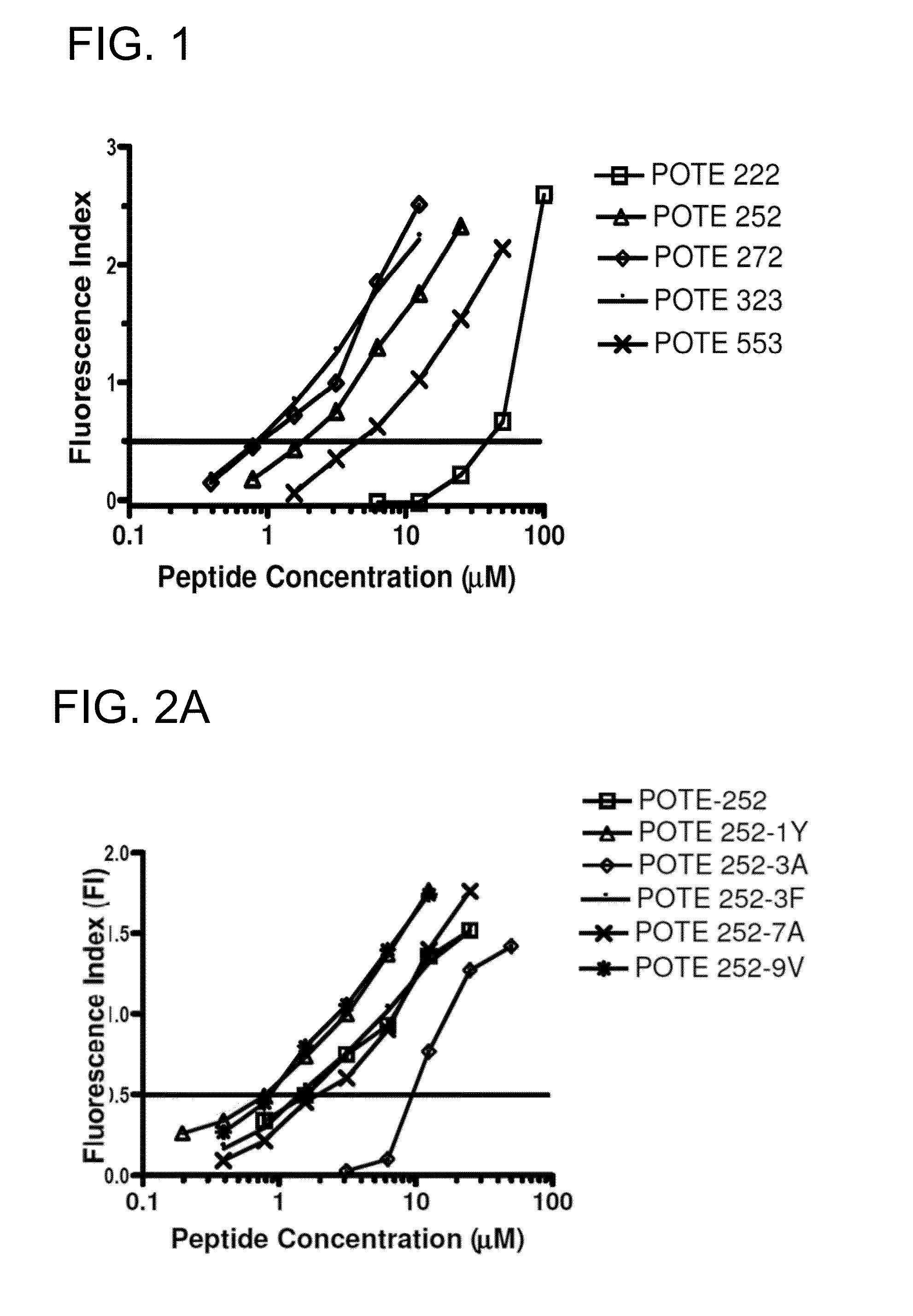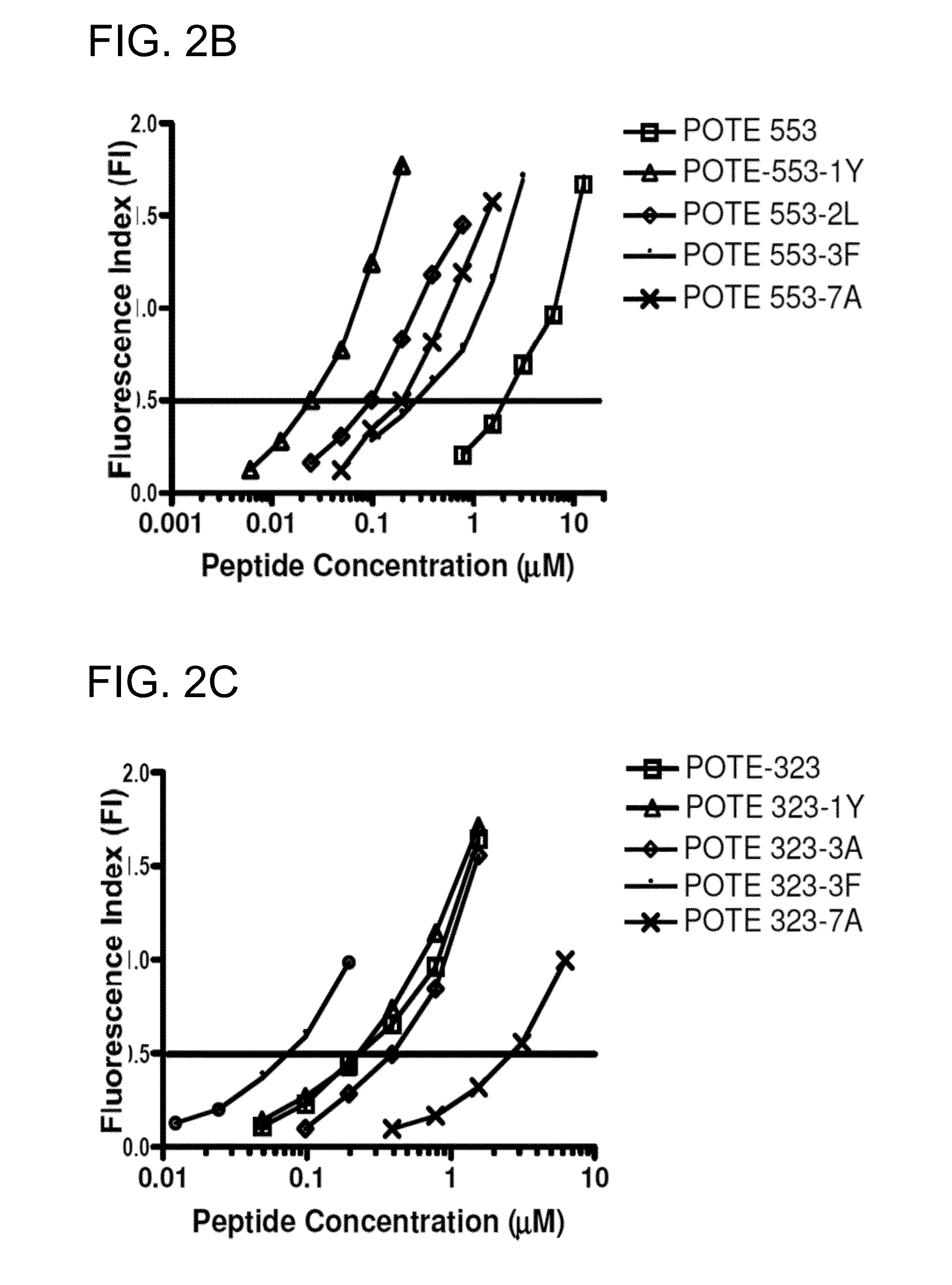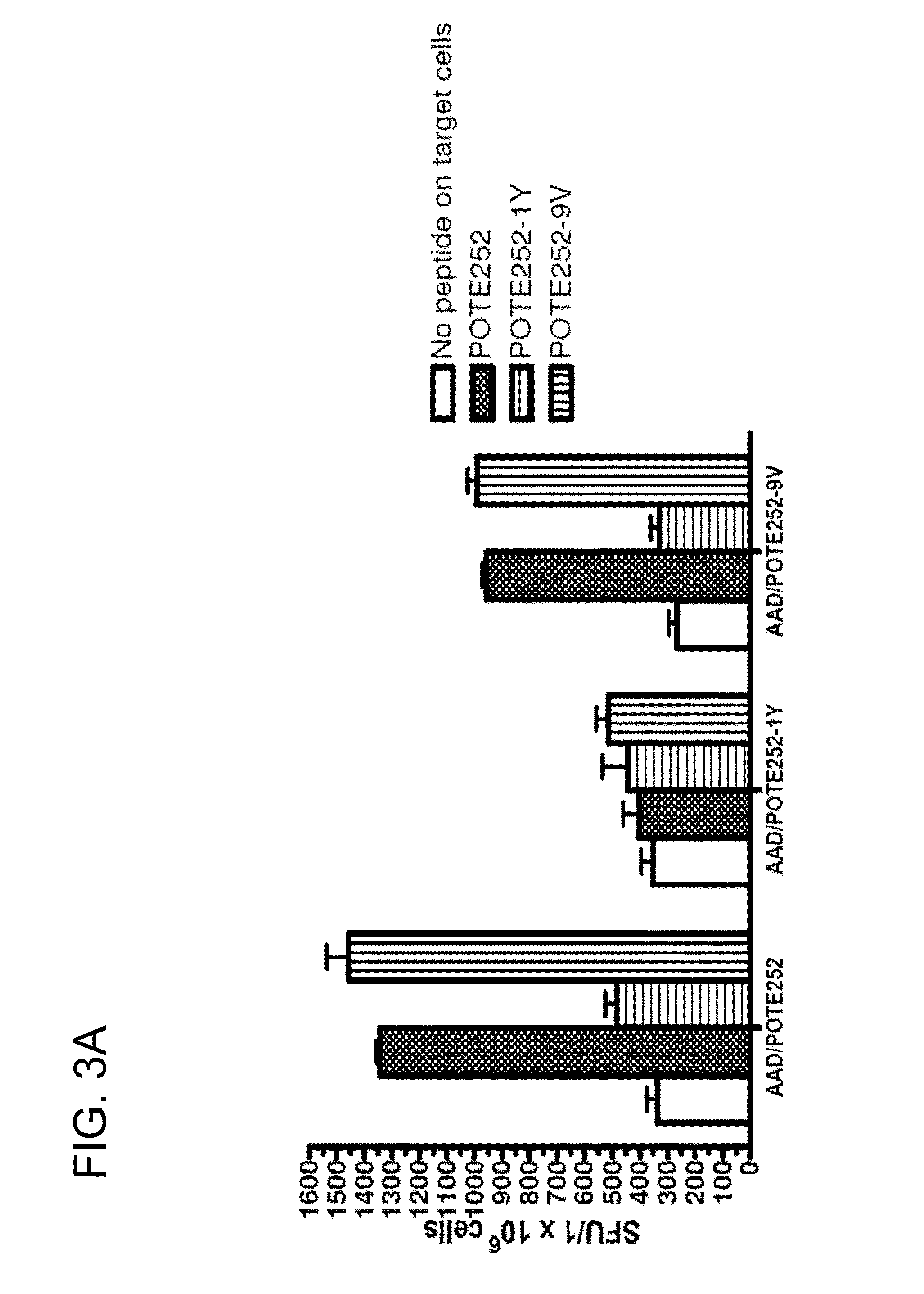Immunogenic pote peptides and methods of use
a technology of pote peptides and immunomodulatory cells, applied in the field of pote peptides, can solve the problems of limited treatment, side effects, and inability to achieve optimal natural ctl epitopes of cancers, and achieve the effect of improving the sensitivity of the immune system
- Summary
- Abstract
- Description
- Claims
- Application Information
AI Technical Summary
Benefits of technology
Problems solved by technology
Method used
Image
Examples
example
Example 1
Materials and Methods
[0164]This example describes the materials and experimental procedures used for the studies described in Example 2 and Example 3.
Animals
[0165]AAD mice (Newberg et al., J Immunol 156(7):2473-2480, 1996) expressing a chimeric HLA-A2.1 transgene with the α1 and α2 domains from HLA-A2.1 and the α3 domain from H-2Dd (to allow binding to mouse CD8) on a C57BL / 6 background, were used in these experiments. Parts of the experiments were repeated in HHD-2 mice, which express chimeric human HLA-A2.1 with the covalent human β2m, without any murine class I molecule. Mice were bred and housed in appropriate animal care facilities. All procedures with animals were conducted in accordance with the institutional approved protocols.
Peptides
[0166]Peptides in this study were synthesized on a Model Symphony Peptide Synthesizer (Perkin-Elmer, Boston, Mass.) using conventional fluorenylmethoxycarbonyl (f-MOC) chemistry and cleaved from the resin by trifluoroacetic acid. The p...
example 2
Identification and Enhancement of HLA-A2.1-Restricted CTL Epitopes of POTE
Prediction of HLA-A2.1-Restricted Epitopes
[0174]The prototype sequence of POTE has 584 amino acid residues. Five 9-mer peptides were first selected based on amino acid anchor residues that determine binding to HLA-A2 molecules and three predictive algorithms (Ruppert et al., Cell 74:929-37, 1993; Rammensee et al., Immunogenetics 50(3-4):213-219, 1999; Andersen et al., Scand J Immunol 57(1):21-27, 2003; Tourdot et al., Eur J Immunol 30(12):3411-3421, 2000). The Parker score is based on a predicted half-time of dissociation to HLA class I molecules using a matrix of AAs at each position in the sequence based on known binding peptides, and a score of higher than 100 is suggested as a potential binder. The second algorithm was developed by Dr. Zhiping Weng, which is based on linear programming for predicting HLA-A2 binding peptides (http: / / zlab.bu.edu / SMM / ). A ln(IC50) lower than 8 is predicted to be a HLA-A2 bind...
example 3
CTLs Induced by Modified POTE Peptides Against Human Cancer Cells
[0193]To serve as candidate tumor vaccines, induction of cytotoxicity to kill human cancer cells is essential. Three human cancer cell lines, NCI-H522 (human non-small cell lung cancer cell, POTE+ / HLA-A2), HTB-19 (human mammary carcinoma, POTE+ / HLA-A1) and MDA-MB-231 (human breast cancer cell, POTE− / HLA-A2) were chosen as target cells in this study. As shown in FIGS. 8A and 8B, although POTE 252-9V is the most immunogenic, the CTLs induced by the modified peptide did not kill POTE-expressing cancer cells, even at high E / T ratios. This suggests that POTE 252 may not be correctly processed and presented on HLA-A2 in these tumor cells. In contrast, the CD8+ T cells induced by both POTE 553-1Y and POTE 323-3F immunization and restimulation produced significant cytotoxicity to lyse NCI-H522 cells. Killing of only the tumors that express both POTE and HLA-A2, and not tumors expressing either one alone, confirms the specifici...
PUM
| Property | Measurement | Unit |
|---|---|---|
| molecular weight | aaaaa | aaaaa |
| temperature | aaaaa | aaaaa |
| melting temperature | aaaaa | aaaaa |
Abstract
Description
Claims
Application Information
 Login to View More
Login to View More - R&D
- Intellectual Property
- Life Sciences
- Materials
- Tech Scout
- Unparalleled Data Quality
- Higher Quality Content
- 60% Fewer Hallucinations
Browse by: Latest US Patents, China's latest patents, Technical Efficacy Thesaurus, Application Domain, Technology Topic, Popular Technical Reports.
© 2025 PatSnap. All rights reserved.Legal|Privacy policy|Modern Slavery Act Transparency Statement|Sitemap|About US| Contact US: help@patsnap.com



